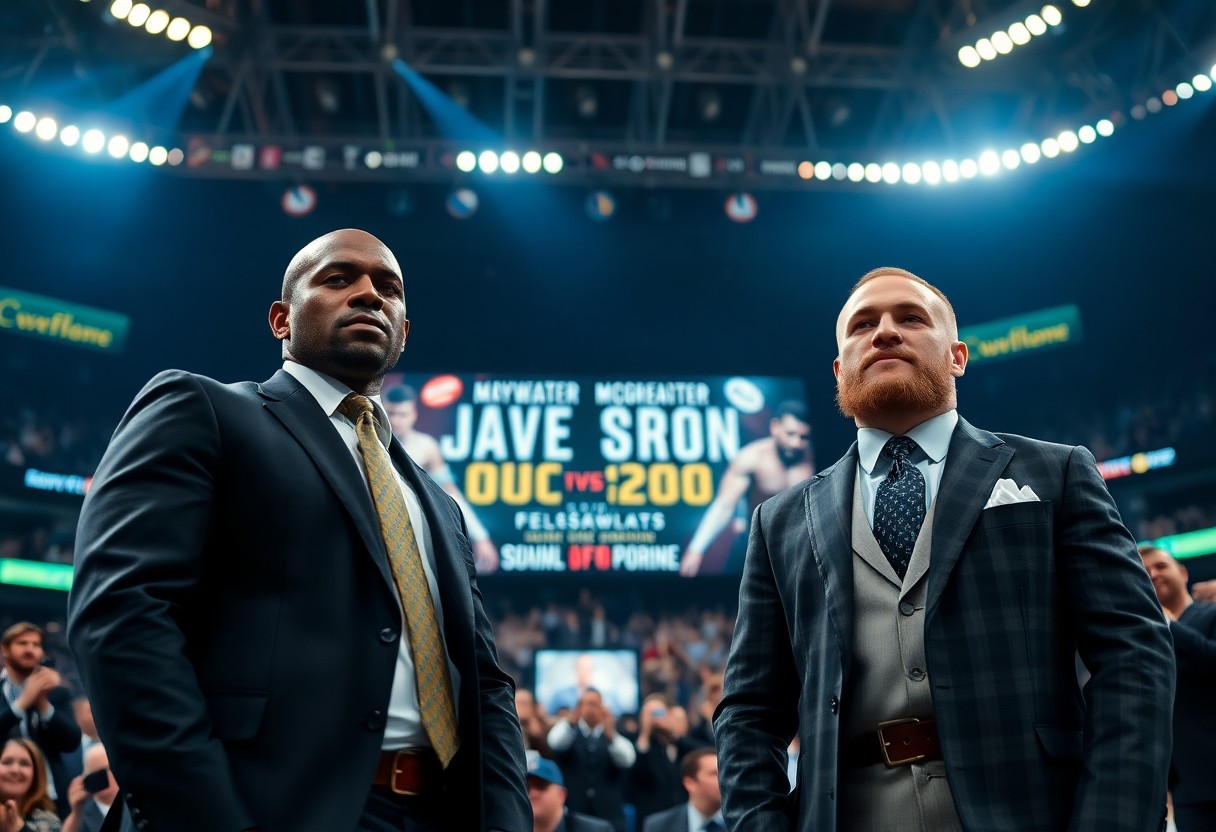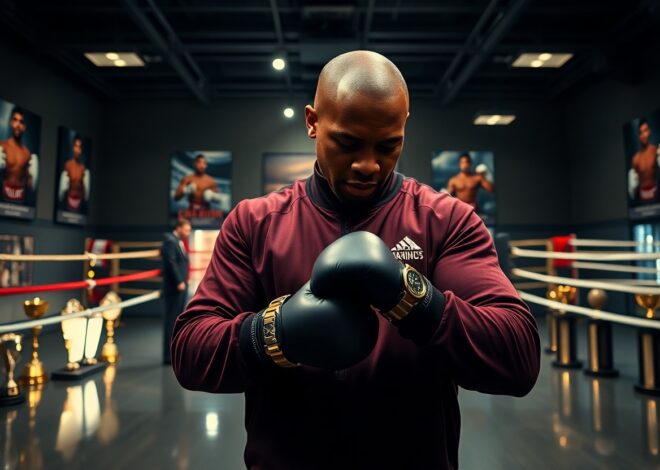
Business Lessons From Floyd Mayweather And Conor McGregor: Building A Global Brand In Sports
With their unprecedented success, Floyd Mayweather and Conor McGregor have transformed the landscape of sports marketing, showing how to build a global brand through strategic partnerships, social media mastery, and personal branding. Their approach combines high-stakes promotion, savvy business decisions, and a larger-than-life persona that captivates audiences worldwide. This blog post examines into the innovative tactics employed by these two athletes and how their lessons can be applied to any brand aiming for global recognition in the competitive sports arena.
The Power of Personal Branding
Floyd Mayweather and Conor McGregor exemplify how personal branding can elevate athletes to global icons. Their carefully crafted images, distinctive styles, and unapologetic attitudes resonate with fans and create immense marketability, allowing them to leverage their personalities beyond the ring. By owning their narratives, both fighters have expanded their influence into various sectors, from fashion to entertainment, ultimately solidifying their status as multifaceted brands.
Leveraging Individual Identity
Mayweather’s persona as “Money” showcases wealth and success, while McGregor’s brash confidence and flair for the dramatic have captivated audiences. Both have embraced their backgrounds and experiences, using them to connect with fans on a personal level. This unique approach transforms their identities into relatable brands that engage a diverse audience.
Creating a Unique Selling Proposition
Establishing a unique selling proposition (USP) allows athletes to differentiate themselves in a saturated market. Mayweather’s undefeated record and McGregor’s dual-title achievement serve as compelling USPs that not only highlight their prowess but also create a narrative of exclusivity and success. Fans are drawn to what makes both fighters special, thus driving brand loyalty and merchandise sales.
The significance of a strong USP becomes evident through Mayweather’s promotional approach, which hinges on his undefeated status and opulent lifestyle. This not only attracts fans but also investors and sponsors looking to associate with success. McGregor capitalizes on his polarizing public persona, turning controversy into conversation and negotiation leverage. The ability to articulate a clear and enticing USP leads to higher visibility, sponsorship opportunities, and overall brand expansion. By consistently communicating these unique attributes, both fighters have cultivated loyal followings, resulting in unprecedented earnings and market impact.
Mastering the Art of Promotion
Promotional mastery transforms athletes into global icons. Floyd Mayweather and Conor McGregor exemplify how strategic promotion not only enhances their visibility but also drives revenue. Their ability to create excitement around their fights demonstrates the power of effective marketing tactics in expanding brand reach and influence.
Utilizing Social Media and Digital Marketing
Social media platforms have become indispensable for athletes to engage fans and promote events. Mayweather’s and McGregor’s frequent use of platforms like Instagram and Twitter amplifies their personas while delivering real-time updates and teasers. This approach fosters a direct connection with millions, significantly expanding their global presence.
Crafting a Compelling Narrative
Creating a strong narrative is vital for boxers seeking to captivate an audience. Mayweather’s “Money” brand and McGregor’s “Notorious” persona both resonate deeply, telling stories of grit, determination, and luxury. These narratives not only provide a backdrop for fights but also build lasting fan loyalty and generate substantial buzz.
Both fighters expertly weave personal experiences and professional triumphs into their narratives, making them relatable yet aspirational. For instance, Mayweather often highlights his rags-to-riches journey, using social media to showcase his lavish lifestyle as a reward for hard work. Similarly, McGregor’s transition from a struggling fighter to a global superstar serves as a motivational tale that resonates widely. This storytelling approach captivates audiences, encouraging not just viewership but also deeper emotional connections, thereby enhancing their brand appeal.
Strategic Partnerships and Collaborations
Strategic partnerships serve as a catalyst for brand growth, allowing athletes like Mayweather and McGregor to amplify their visibility and influence. By aligning themselves with reputable organizations and industry leaders, they broaden their market reach and enhance their credibility. These alliances not only elevate their personal brands but also create new revenue streams through joint ventures and collaborative marketing campaigns.
Aligning with High-Profile Sponsors
High-profile sponsorships form the backbone of lucrative partnerships, enhancing brand visibility. Mayweather, with his ties to brands like Hublot and MGM Grand, leveraged these relationships for substantial financial benefits. Similarly, McGregor, associated with brands like Bud Light and Reebok, transformed his sponsorships into endorsements that resonate with his audience, boosting loyalty and recognition.
Expanding Reach Through Cross-Promotions
Cross-promotions enable athletes to tap into new audiences and markets, maximizing exposure. Utilizing platforms like social media and live events, Mayweather and McGregor effectively combined their brands with others, resulting in exponential growth in follower counts and engagement rates. This synergy not only benefits the athletes but also provides sponsors with access to expanded demographics.
For example, Mayweather’s collaboration with the WWE during his crossover into entertainment showcased the power of cross-promotion. This partnership attracted not only boxing fans but also WWE enthusiasts, leading to a combined audience exceeding millions. Both athletes have navigated cross-promotional landscapes adeptly, aligning products and events that resonate with their personal brands. This strategic approach highlights the potential for increased relevance and profitability through collaborative efforts. Expanding into diverse sectors ensures sustained brand momentum beyond traditional sports boundaries.
The Role of Audience Engagement
Engaging with fans transforms a one-time viewer into a lifelong supporter. Mayweather and McGregor have harnessed social media to create a continuous dialogue, using platforms like Instagram and Twitter not just for announcements but to share personal stories, behind-the-scenes content, and real-time updates. This accessibility fosters a sense of belonging, turning casual fans into loyal brand advocates who eagerly participate in the narrative.
Building a Loyal Fanbase
A dedicated fanbase relies on emotional connections and exclusivity. Mayweather’s precision in curating his image and McGregor’s flair for dramatic storytelling exemplify how athletes can resonate deeply with their audience. By consistently delivering value and engaging content, they have cultivated communities that celebrate their achievements and promote their brands beyond the ring.
Interactive Experiences and Merchandise Sales
Creating memorable experiences enhances fan engagement and drives merchandise sales. Both athletes have capitalized on events where fans can interact directly, such as meet-and-greets or exclusive previews of merchandise lines. This strategy not only boosts sales but also solidifies a long-lasting relationship between the athletes and their audiences.
Interactive experiences are integral to building a brand ecosystem. Mayweather and McGregor have effectively utilized live events, fan meet-ups, and exclusive merchandise drops to create hype. For instance, McGregor’s limited edition apparel often sells out rapidly, underscoring how fans crave unique opportunities to connect. Tying merchandise to exclusive experiences significantly enhances the perceived value, fueling not only immediate sales but also ongoing loyalty among supporters, who feel intimately connected to the athlete’s journey and success.
Lessons in Resilience and Adaptability
Floyd Mayweather and Conor McGregor exemplify the essence of resilience and adaptability in their careers. Both athletes faced significant hurdles yet transformed these obstacles into opportunities for growth. Mayweather’s undefeated record resulted from a decade-long commitment to constantly refine his skills and strategies, showcasing the importance of remaining agile in a competitive landscape. McGregor, despite experiencing setbacks in his UFC career, embraced change, leveraging his brand to diversify into sectors like fashion and whiskey, demonstrating a proactive approach in an evolving market.
Bouncing Back from Setbacks
After experiencing a shock loss in 2016 against Nate Diaz, McGregor made strategic adjustments, not only in training but also in mindset, leading to his victorious rematch. This highlights the notion that setbacks can serve as catalysts for improvement, encouraging a reassessment of tactics and priorities. Mayweather’s ability to come back from early career troubles and public controversies by honing his unmatched defensive skills further underscores the power of perseverance.
Embracing Change in a Dynamic Market
Both fighters harnessed the fluctuating landscape of sports and entertainment to their advantage, thriving where others might falter. For instance, McGregor’s ability to pivot from MMA to boxing and dominate the crossover fight against Mayweather in 2017 generated an astounding $550 million in revenue, signaling the lucrative potential of cross-brand ventures.
The dynamic nature of sports branding necessitates a forward-thinking approach. McGregor’s transition into business ventures, such as his Proper No. Twelve whiskey brand, exemplifies how athletes can leverage their fame to explore new markets and maintain relevance. Mayweather’s promotional company has reshaped boxing promotions, showcasing a willingness to innovate traditional business models. By recognizing trends and shifting dynamics, both athletes have not just survived but excelled in a landscape marked by rapid change, inspiring others to take calculated risks and seize emerging opportunities.
Final Words
With these considerations, the business strategies employed by Floyd Mayweather and Conor McGregor exemplify the art of branding in sports. Their mastery of self-promotion, leveraging personal narratives, and strategic partnerships have not only expanded their individual brands but also set a standard for athletes worldwide. By embracing social media, creating compelling personas, and engaging fans directly, they have demonstrated that success in sports transcends the ring. In today’s competitive landscape, aspiring athletes must adopt these lessons to cultivate their own global brands and maximize their market potential.
FAQ
Q: What can businesses learn from Floyd Mayweather’s branding strategy?
A: Floyd Mayweather demonstrates the importance of personal branding and self-promotion. His use of social media to showcase his lifestyle and achievements creates a strong personal brand that attracts fans and sponsors. Businesses can learn to leverage personal identities and effective marketing strategies to enhance their visibility and appeal.
Q: How did Conor McGregor build his global brand?
A: Conor McGregor built his brand through a combination of charisma, confidence, and entertaining promotional tactics. He utilized press conferences and social media to engage supporters and create hype around his fights, fostering loyalty among fans. Businesses can adopt similar approaches by cultivating engaging narratives and maintaining an active online presence.
Q: What strategies did both fighters use to monetize their brands?
A: Both Floyd Mayweather and Conor McGregor expanded their income streams through various avenues, including merchandise sales, sponsorship deals, and fight pay-per-view revenues. They capitalized on their notoriety to secure endorsements and launch business ventures. Organizations can explore multiple revenue sources and partnerships to maximize their brand’s profitability.

